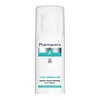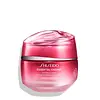What's inside
What's inside
 Key Ingredients
Key Ingredients

 Benefits
Benefits

 Concerns
Concerns

 Ingredients Side-by-side
Ingredients Side-by-side

Water
Skin ConditioningGlycerin
HumectantEthylhexyl Methoxycinnamate
UV AbsorberC12-15 Alkyl Benzoate
AntimicrobialPolyglyceryl-3 Methylglucose Distearate
EmulsifyingDicaprylyl Carbonate
EmollientEthylhexyl Triazone
UV AbsorberGlyceryl Stearate
EmollientIsopropyl Palmitate
EmollientMethyl Gluceth-20
HumectantButyl Methoxydibenzoylmethane
UV Absorber1,2-Hexanediol
Skin ConditioningCetyl Alcohol
EmollientButylene Glycol
HumectantImperata Cylindrica Root Extract
Skin ConditioningHydrogenated Olive Oil Decyl Esters
Emulsion StabilisingPEG-8
HumectantSodium Polyacrylate
AbsorbentAcrylates/C10-30 Alkyl Acrylate Crosspolymer
Emulsion StabilisingAllantoin
Skin ConditioningEthylhexylglycerin
Skin ConditioningTriethanolamine
BufferingCaprylic/Capric Triglyceride
MaskingTocopherol
AntioxidantCodium Tomentosum Extract
Skin ProtectingCarbomer
Emulsion StabilisingAscorbyl Palmitate
AntioxidantInulin
Skin ConditioningLaminaria Ochroleuca Extract
Skin ConditioningAlpha-Glucan Oligosaccharide
CleansingAscorbic Acid
AntioxidantCitric Acid
BufferingPhenoxyethanol
PreservativeWater, Glycerin, Ethylhexyl Methoxycinnamate, C12-15 Alkyl Benzoate, Polyglyceryl-3 Methylglucose Distearate, Dicaprylyl Carbonate, Ethylhexyl Triazone, Glyceryl Stearate, Isopropyl Palmitate, Methyl Gluceth-20, Butyl Methoxydibenzoylmethane, 1,2-Hexanediol, Cetyl Alcohol, Butylene Glycol, Imperata Cylindrica Root Extract, Hydrogenated Olive Oil Decyl Esters, PEG-8, Sodium Polyacrylate, Acrylates/C10-30 Alkyl Acrylate Crosspolymer, Allantoin, Ethylhexylglycerin, Triethanolamine, Caprylic/Capric Triglyceride, Tocopherol, Codium Tomentosum Extract, Carbomer, Ascorbyl Palmitate, Inulin, Laminaria Ochroleuca Extract, Alpha-Glucan Oligosaccharide, Ascorbic Acid, Citric Acid, Phenoxyethanol
Water
Skin ConditioningDipropylene Glycol
HumectantGlycerin
HumectantBetaine
HumectantAlcohol Denat.
AntimicrobialDimethicone
EmollientIsodecyl Neopentanoate
EmollientPPG-3 Dipivalate
Skin ConditioningXylitol
HumectantPhytosteryl/Octyldodecyl Lauroyl Glutamate
Skin ConditioningPhenoxyethanol
PreservativeHdi/Trimethylol Hexyllactone Crosspolymer
Ammonium Acryloyldimethyltaurate/Beheneth-25 Methacrylate Crosspolymer
Emulsion StabilisingCarbomer
Emulsion StabilisingAlcohol
AntimicrobialPotassium Hydroxide
BufferingErythritol
HumectantPEG/PPG-14/7 Dimethyl Ether
Skin ConditioningPEG/PPG-17/4 Dimethyl Ether
Skin ConditioningTocopheryl Acetate
AntioxidantParfum
MaskingButylene Glycol
HumectantXanthan Gum
EmulsifyingDisodium EDTA
Acrylates/C10-30 Alkyl Acrylate Crosspolymer
Emulsion StabilisingAminopropyl Dimethicone
Caffeine
Skin ConditioningTremella Fuciformis Polysaccharide
Emulsion StabilisingSilica
AbrasiveSodium Metaphosphate
BufferingHexyl Cinnamal
PerfumingTocopherol
AntioxidantLimonene
PerfumingLinalool
PerfumingSodium Metabisulfite
AntioxidantCitronellol
PerfumingScutellaria Baicalensis Root Extract
AstringentAngelica Keiskei Leaf/Stem Extract
Skin ConditioningGeraniol
PerfumingCamellia Sinensis Leaf Extract
AntimicrobialSodium Acetylated Hyaluronate
HumectantCI 77491
Cosmetic ColorantCitrus Unshiu Peel Extract
MaskingZingiber Aromaticus Extract
Skin ConditioningHydrolyzed Conchiolin Protein
Skin ConditioningCinnamomum Cassia Bark Extract
MaskingPyrola Incarnata Extract
Skin ConditioningPanax Ginseng Root Extract
EmollientWater, Dipropylene Glycol, Glycerin, Betaine, Alcohol Denat., Dimethicone, Isodecyl Neopentanoate, PPG-3 Dipivalate, Xylitol, Phytosteryl/Octyldodecyl Lauroyl Glutamate, Phenoxyethanol, Hdi/Trimethylol Hexyllactone Crosspolymer, Ammonium Acryloyldimethyltaurate/Beheneth-25 Methacrylate Crosspolymer, Carbomer, Alcohol, Potassium Hydroxide, Erythritol, PEG/PPG-14/7 Dimethyl Ether, PEG/PPG-17/4 Dimethyl Ether, Tocopheryl Acetate, Parfum, Butylene Glycol, Xanthan Gum, Disodium EDTA, Acrylates/C10-30 Alkyl Acrylate Crosspolymer, Aminopropyl Dimethicone, Caffeine, Tremella Fuciformis Polysaccharide, Silica, Sodium Metaphosphate, Hexyl Cinnamal, Tocopherol, Limonene, Linalool, Sodium Metabisulfite, Citronellol, Scutellaria Baicalensis Root Extract, Angelica Keiskei Leaf/Stem Extract, Geraniol, Camellia Sinensis Leaf Extract, Sodium Acetylated Hyaluronate, CI 77491, Citrus Unshiu Peel Extract, Zingiber Aromaticus Extract, Hydrolyzed Conchiolin Protein, Cinnamomum Cassia Bark Extract, Pyrola Incarnata Extract, Panax Ginseng Root Extract
 Reviews
Reviews

Ingredients Explained
These ingredients are found in both products.
Ingredients higher up in an ingredient list are typically present in a larger amount.
Acrylates/C10-30 Alkyl Acrylate Crosspolymer is a synthetic polymer. It is used to thicken and improve the texture of products. Due to its properties, it can prevent water and oil ingredients from separating.
Butylene Glycol (or BG) is used within cosmetic products for a few different reasons:
Overall, Butylene Glycol is a safe and well-rounded ingredient that works well with other ingredients.
Though this ingredient works well with most skin types, some people with sensitive skin may experience a reaction such as allergic rashes, closed comedones, or itchiness.
Learn more about Butylene GlycolCarbomer is a polymer of acrylic acid. Its main role is to create a gel consistency.
A high amount of carbomer can cause pilling or balling up of products. Don't worry, most products contain 1% or less of carbomer.
Glycerin is already naturally found in your skin. It helps moisturize and protect your skin.
A study from 2016 found glycerin to be more effective as a humectant than AHAs and hyaluronic acid.
As a humectant, it helps the skin stay hydrated by pulling moisture to your skin. The low molecular weight of glycerin allows it to pull moisture into the deeper layers of your skin.
Hydrated skin improves your skin barrier; Your skin barrier helps protect against irritants and bacteria.
Glycerin has also been found to have antimicrobial and antiviral properties. Due to these properties, glycerin is often used in wound and burn treatments.
In cosmetics, glycerin is usually derived from plants such as soybean or palm. However, it can also be sourced from animals, such as tallow or animal fat.
This ingredient is organic, colorless, odorless, and non-toxic.
Glycerin is the name for this ingredient in American English. British English uses Glycerol/Glycerine.
Learn more about GlycerinPhenoxyethanol is a preservative that has germicide, antimicrobial, and aromatic properties. Studies show that phenoxyethanol can prevent microbial growth. By itself, it has a scent that is similar to that of a rose.
It's often used in formulations along with Caprylyl Glycol to preserve the shelf life of products.
Tocopherol (also known as Vitamin E) is a common antioxidant used to help protect the skin from free-radicals and strengthen the skin barrier. It's also fat soluble - this means our skin is great at absorbing it.
Vitamin E also helps keep your natural skin lipids healthy. Your lipid skin barrier naturally consists of lipids, ceramides, and fatty acids. Vitamin E offers extra protection for your skin’s lipid barrier, keeping your skin healthy and nourished.
Another benefit is a bit of UV protection. Vitamin E helps reduce the damage caused by UVB rays. (It should not replace your sunscreen). Combining it with Vitamin C can decrease sunburned cells and hyperpigmentation after UV exposure.
You might have noticed Vitamin E + C often paired together. This is because it is great at stabilizing Vitamin C. Using the two together helps increase the effectiveness of both ingredients.
There are often claims that Vitamin E can reduce/prevent scarring, but these claims haven't been confirmed by scientific research.
Learn more about TocopherolWater. It's the most common cosmetic ingredient of all. You'll usually see it at the top of ingredient lists, meaning that it makes up the largest part of the product.
So why is it so popular? Water most often acts as a solvent - this means that it helps dissolve other ingredients into the formulation.
You'll also recognize water as that liquid we all need to stay alive. If you see this, drink a glass of water. Stay hydrated!
Learn more about Water